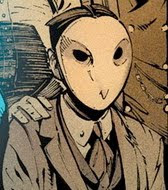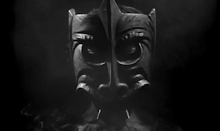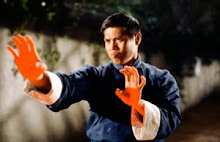
When it was announced that Brian De Palma would be directing an adaptation of James Ellroy’s The Black Dahlia, one word came to mind, “Perfect.” That should have been my first warning sign. Because for those of you who have not read it, allow me to assure you that there really was no better director to bring James Ellroy’s gonzo gothic noir travesty to the screen with all its messy pulpy life intact.
Ellroy paints a world in which power is used to indulge decadence at it’s end point, a place where the violence is explicit, the sex is kinky, film is a mysterious and almost elemental force, the women are man eaters, and voyeurism is a weapon. In short, he wrote a De Palma movie.
It’s worth noting that when the Black Dahlia came out I was at the height of both my De Palma and Ellroy fandom. I had just ripped through the LA Quartet, and the De Palma canon (as if there can ever be such a thing, if there’s a filmmaker whose classics are less agreed on by their fans I’ve never come across them) and by the time the Black Dahlia came out I was actively hungry for something new. I was inspired; I cut this for the love of God.
Even the understated poster was perfect, classy gothic and lurid all at once. As a result few films have been as Teflon to prior criticism as this one has. No number of bad reviews could dull the feeling I had as I sat in the theater, convinced that I was about to see a masterpiece.
Of course I was crushed. I’ve returned to the film at least a half a dozen times over the three years it’s been out. Each time with adjusted expectations, each time feeling a remnant of my former optimism. Each time having to face the fact that for at least three quarters of it’s runtime The Black Dahlia is one of the most inert lifeless films I’ve ever seen.
In the interest of truth in criticism there are quite a few moments that you could put on any reel of DePalma’s greatest hits, KD Lang’s grand cameo and musical number as the Joel Grey like MC of an underground lesbian night club, William Finley’s decayed killer, Elizabeth Short’s haunting screen test, the first person freak show that is our introduction to the Liscott’s, and the giddy (though utterly baffling but more on that later) centerpiece hotel chase, with it’s infinite stairs, stunning slow motion, and a punch line worthy of Argento in his prime. There are scenes, moments, and grace notes to be savored here. And they’re surrounded by a movie that stubbornly refuses to work.
There are of course those who believe that De Palma is merely a director of great scenes rather then great movies and thus (oddly enough it’s his champions rather then his detractors who I usually hear go this route) I shouldn’t worry about it. Bull, the best DePalma films work almost like puzzle boxes with scenes folding out of and mirroring each other in surprising and gratifying ways (the dual screams in Blow Out, the blood at both ends of Carrie) ignoring the whole in favor of the parts does De Palma a disservice.
And what of that whole? It’s almost impossible to know where to begin. The leaden lead performances by Hartnett, Eckhart, Swank, and Johansson? Now that’s hardly what you’d call a dream team but all have done capable work elsewhere and few have been worse then in this film (Johannson comes off particularly bad, despite the fact that she’s done credible period work elsewhere, she ends up looking like a bored party girl in every scene she’s in). What about the leaden pacing? Or the terrible voice over? Or the cheap chintzy look the film has.
All of these would be fodder in an ordinary review, but since we’re talking DePalma here. Let’s narrow our focus to two factors; A) How could a director know for being less a human being then a robot created and fed the data to create the tensest genre movies of all time create a movie that seems to understand the rules of the genre so very poorly? And B) How did a filmmaker who has made their reputation as being one of the trashiest, filthiest filmmakers this side of John Waters make a film that seems so quaint? Particularly from material as lurid and pulpy as The Black Dahlia.
Let’s start the with the film’s centerpiece The Hotel Chase (A scene it’s worth noting that has no counterpart in the book). Which is a classic De Palma sequence: from its use of slow motion, the operatic score, the sadistic violence, the helpless protagonist, even a ghoulish William Finley to take everything back home. It takes the elements of a suspense scene and damn near turns it into performance art. Hartnet runs up flight after seemingly never ending flight of stairs while his friend is being murdered at their top. It ends with a darkly funny and satisfyingly graceless punch line, that shows De Palma at his blackly humorous best (perhaps De Palma’s most underrated attribute is that of a comedian). It’s a great scene, and it ruins the rest of the movie.
(Internet courtesy demands a spoiler warning)
It’s a sequence ends with the killer dead, and what’s more with the audience KNOWING the killer is dead. As the last third of the movie follows Hartnett around as he pokes around places where the killer may or may not be, which is somewhat less then suspenseful as we, once again, know the killer has joined the choir invisible.
Had De Palma really not noticed he had a fallacy on his hands? Could a director that meticulous really be so sloppy? As a result we have nothing to carry us through the rest of the movie aside from a mystery that has for the most part already been solved and Mr. Hartnett’s less then magnetic screen presence.
The films pacing is harmed further by De Palma’s removal of Ellroy’s Grand Guignol climax in which the detective battles the killer in the rotting heart of Hollywood which served as the murder site for The Dahlia. The fight ends with a touch so deliciously sick, that I couldn’t wait for De Palma to pull it off (I won’t reveal it for those who haven’t read the book, DePalma didn’t so there’s no need for me to). Being that the killer was killed twenty minutes prior, this sequence became somewhat difficult to stage. Instead the film climaxes with the Joss Hartnett wandering around an empty house. Which as you might have surmised is considerably less exciting.
This brings us to the other bizarre short coming of the movie. De Palma was given source material that was as smutty and violent as it gets, filled with the forbidden, and he came back with a movie that was inoffensive and boring. Two words you never want to use (or believe you will have to) in A DePalma film. Ellroy’s book is feels genuinely sick and given the state that the author was in at the time, that’s hardly surprising (but let’s keep it to one auteur at a time here).
We’re talking just to clarify here, about Brian De Palma, the man who opened who directed the delirious sexualized openings of Femme Fatale, Carrie, (Genuinely erotic despite being utterly hilarious) and Dressed To Kill, the man who did a musical number on a Porno shoot set to Frankie Goes To Hollywood (Though his critics note that DePalma’s sexuality hasn’t progressed beyond that of an eighth grade boy giggling his way through a Playboy, I’ve always found that kind of endearing, at least De Palma seems to still believe that sex should be *gasp* fun). The man who created Be Black Baby. The man who blew up Cassevettes at the end of The Fury, killed a senior class in Carrie, and filled Al Pacino with approximately fifty thousand machine gun rounds at the climax of Scarface. If there was anyone who would really rip into this material it would be DePalma.
Instead you come out with a movie that’s about as soft as an R rating can be. There’s no logic I can find behind the decision. If it where any other director I’d argue that they where simply trying to create a pastiche of old forties movies, and where attempting to keep it as classy as they could. The only trouble being that making pastiches of old movies and filling them with sex and violence is kind of what De Palma does.
Still since I am obviously a fan of De Palma, all sorts of questions about The Subjective gaze, rise up to trouble me. Am I just being overzealous? (The films Metacritic and Rotten Tomatoes Scores would suggest otherwise but for the sake of argument lets leave the peanut gallery alone for the moment) Is the problem not De Palma’s film, but my expectations for it? Not that De Palma and Ellroy where made for one another and failed, but the fact that the no movie could live up to the one’s my anticipation had built for me?
In any case we’ve now drifted into how many angels can dance on the head of a pin category. But the fact is that I keep returning to a movie I hate. Is it the movies power, or the power of my own hopes for it? Does it really matter? Either way it keeps playing like that short closed loop of a screen test that the film returns to over and over again. Never different no matter how much we might like it to be.
This is my unofficial entry for Cinema Viewfinder's DePalma Blog-o-thon whether they use it or not you should yet on over as they've had alot of great writing thus far, and it proving to be more fun then several barrels of monkeys who are also overly literate film nerds.





































































































No comments:
Post a Comment